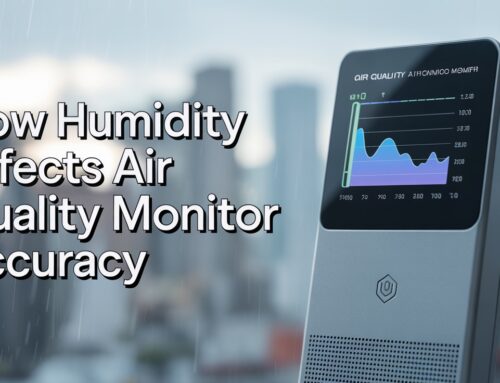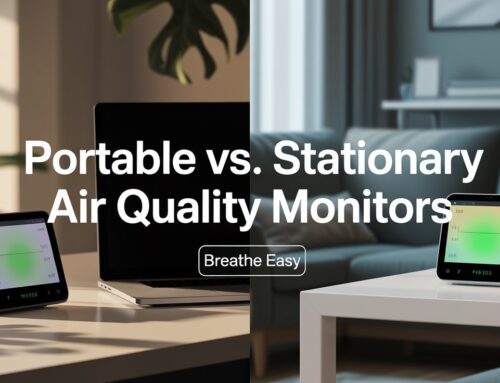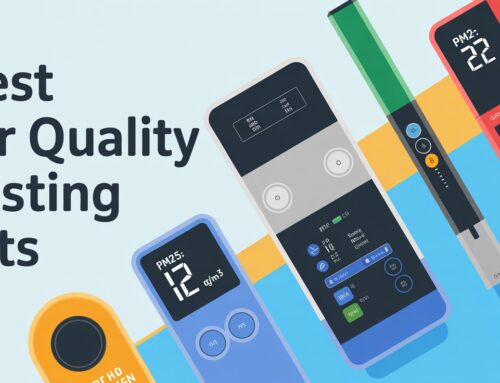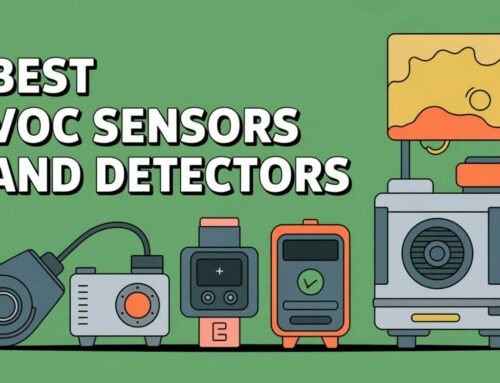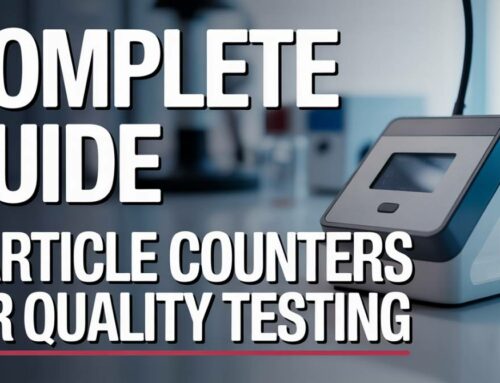October 9, 2025
How to Choose the Right Air Quality Testing Kit
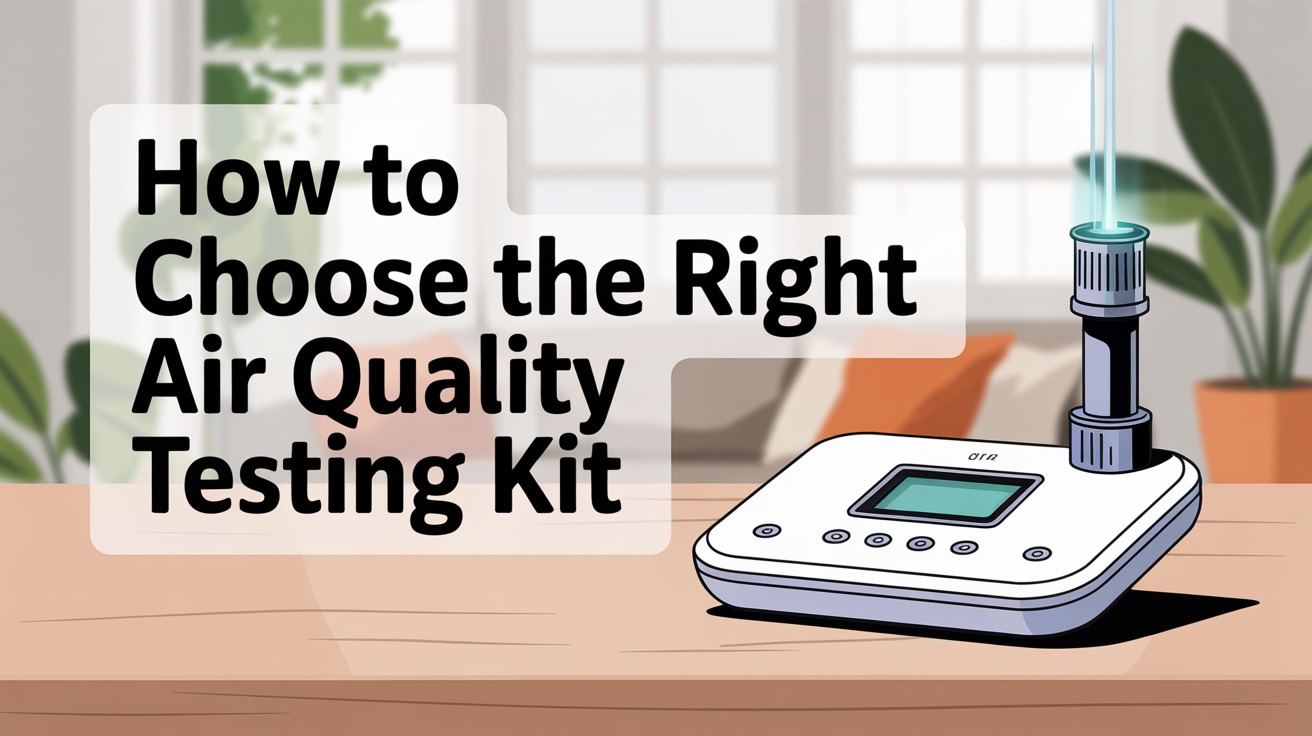
Your home should be your safe haven, but hidden air pollutants might be affecting your family’s health. This comprehensive guide helps Canadian homeowners pick the perfect air quality testing kit for better indoor air and peace of mind.
🔍Should You Test Indoor or Outdoor Air Quality?
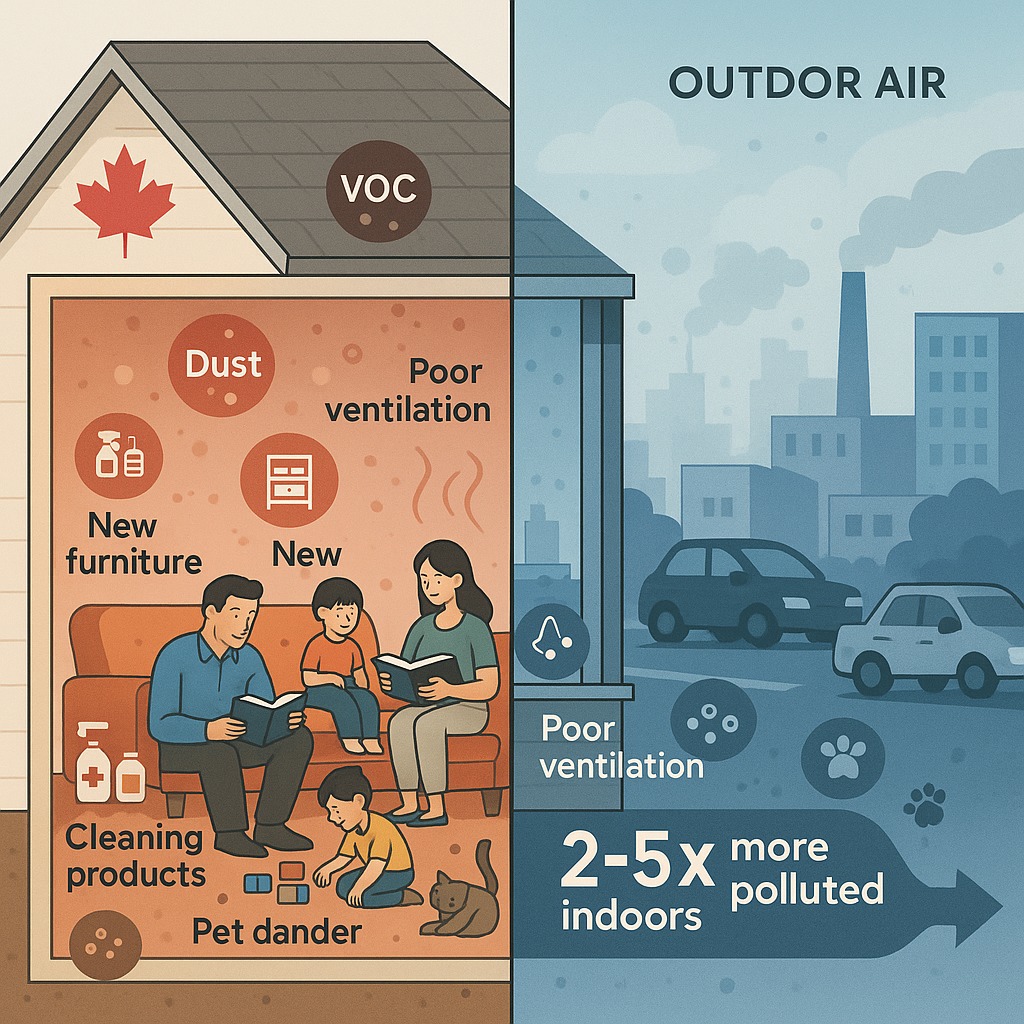
Where Should You Focus Your Testing Efforts?
Most people think outdoor air pollution is the biggest problem. But indoor air can be 2-5 times more polluted than outdoor air. Your home traps pollutants from cleaning products, furniture, paint, and poor ventilation.
Testing Location Tips for Best Results
For most Canadian homeowners, indoor air quality testing should be your first priority.
🧪What Pollutants Should You Test For?
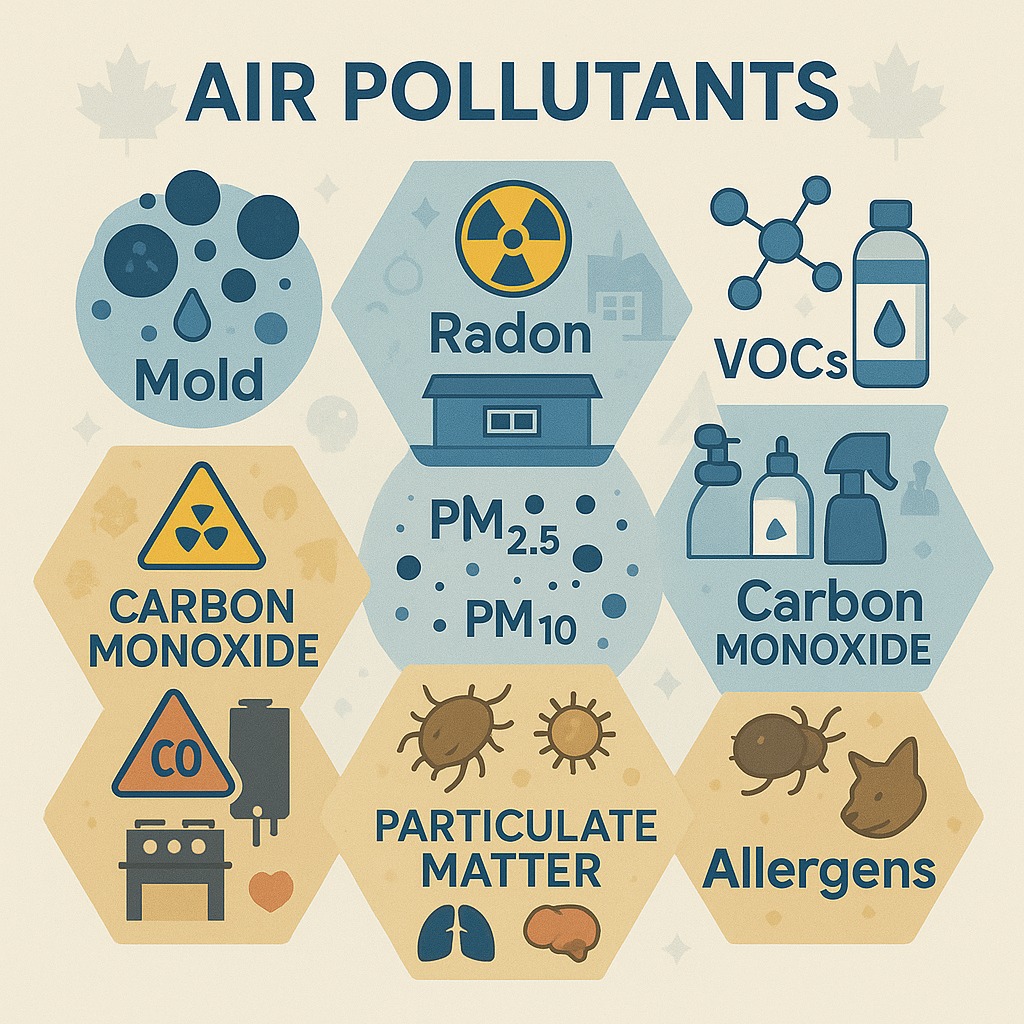
🦠 Mold Testing
Mold grows in damp areas and releases spores that trigger allergies and breathing problems. Canadian homes often have mold issues due to our climate and heating systems.
☢️ Radon Testing
Radon gas comes from soil and rocks under your home. You can’t see or smell it, but long-term exposure causes lung cancer. Health Canada says radon affects 1 in 15 Canadian homes.
🧪 VOC Detection
Volatile Organic Compounds come from paint, furniture, cleaning products, and building materials. High VOC levels cause headaches, dizziness, and breathing problems.
⚠️ Emergency Pollutants: Carbon Monoxide
Carbon monoxide (CO) comes from gas appliances, fireplaces, and car exhaust. Even small amounts cause serious health problems or death. Install CO detectors on every floor of your home and near sleeping areas.
Learn more about common indoor air pollutants that might be affecting your home.
📱Digital vs. Lab-Based Air Quality Testing: Which Is Better?
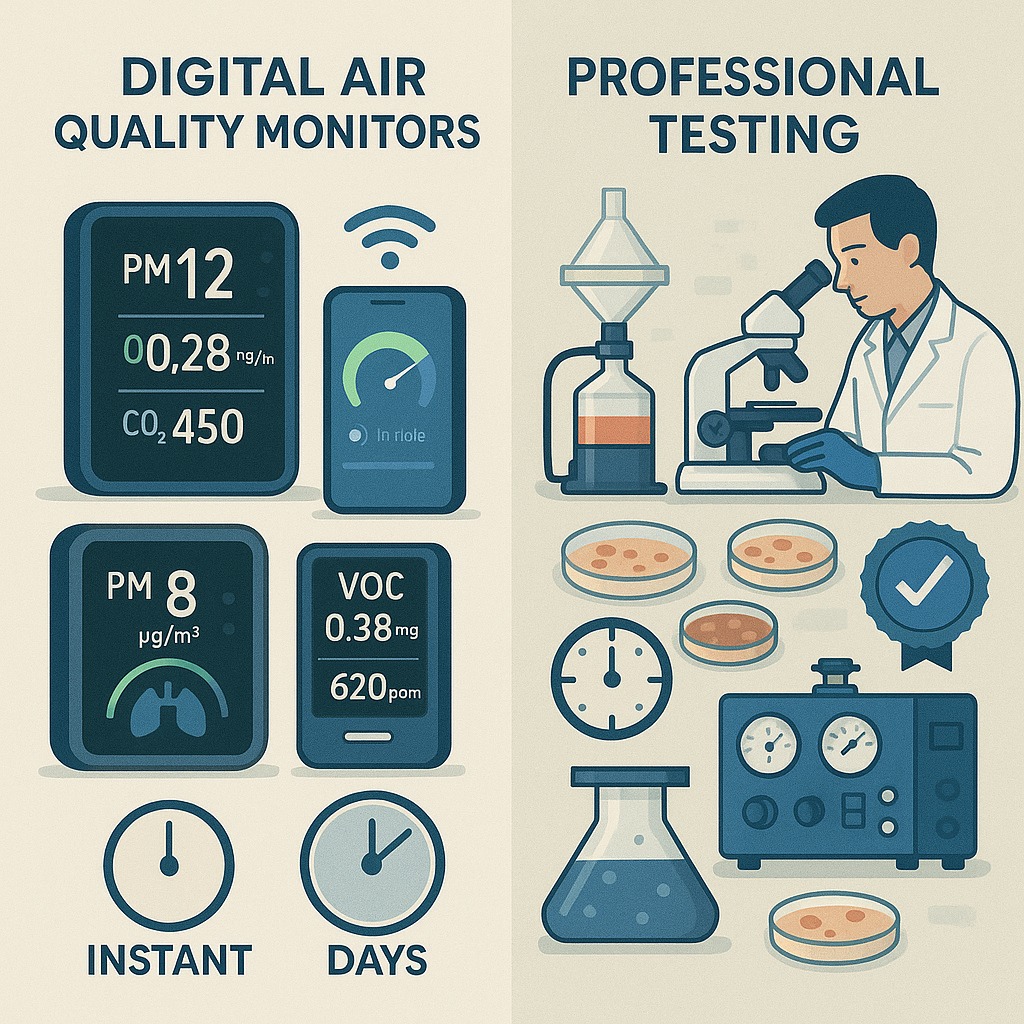
| Feature | Digital Monitors | Lab-Based Testing |
|---|---|---|
| Results Speed | ✅ Instant readings | ❌ Days to weeks |
| Accuracy | ⚠️ Good for trends | ✅ Highest accuracy |
| Cost | ✅ $50-300 one-time | ❌ $200-500+ per test |
| Ongoing Monitoring | ✅ Continuous tracking | ❌ One-time snapshot |
| Professional Documentation | ❌ Not suitable | ✅ Legal documentation |
Choose Digital Monitoring For:
- Daily air quality tracking
- Quick problem identification
- Budget-conscious testing
- Immediate peace of mind
Choose Lab Testing For:
- Confirming digital monitor results
- Identifying specific mold species
- Legal or insurance documentation
- Serious health symptoms
💰Air Quality Testing Kit Price Guide: Budget-Friendly to Professional
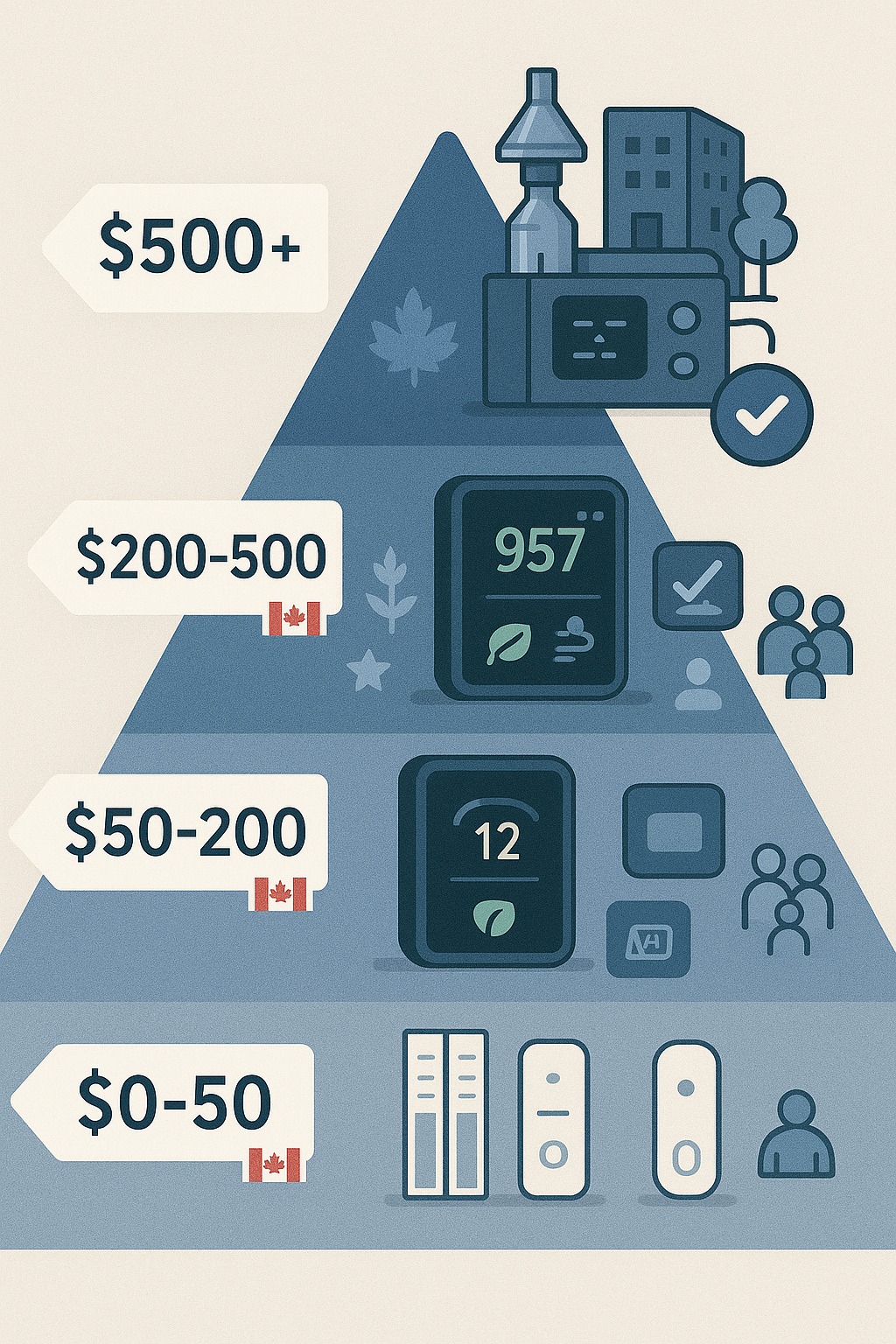
Basic DIY Testing
Best for: First-time testing and specific pollutant checks
- Single-use test strips
- Basic lab analysis
- Simple pass/fail results
- Mold and formaldehyde testing
Digital Air Quality Monitors
Best for: Ongoing monitoring and multi-pollutant detection
- Multi-sensor technology
- Smartphone app connectivity
- Real-time data logging
- Color-coded alerts
Advanced Digital Systems
Best for: Health-conscious families and comprehensive monitoring
- Radon gas detection
- Professional-grade accuracy
- Advanced data analysis
- Air purifier integration
Professional-Grade Equipment
Best for: Commercial use and serious air quality issues
- Research-grade sensors
- Extensive pollutant detection
- Compliance reporting
- Long-term reliability
Budget-Smart Testing Strategy
Phase 1: Basic Safety ($50-100) → Phase 2: Ongoing Monitoring ($100-200) → Phase 3: Professional Verification ($200-500)
🏠Residential vs. Commercial Air Quality Testing: Different Needs, Different Solutions
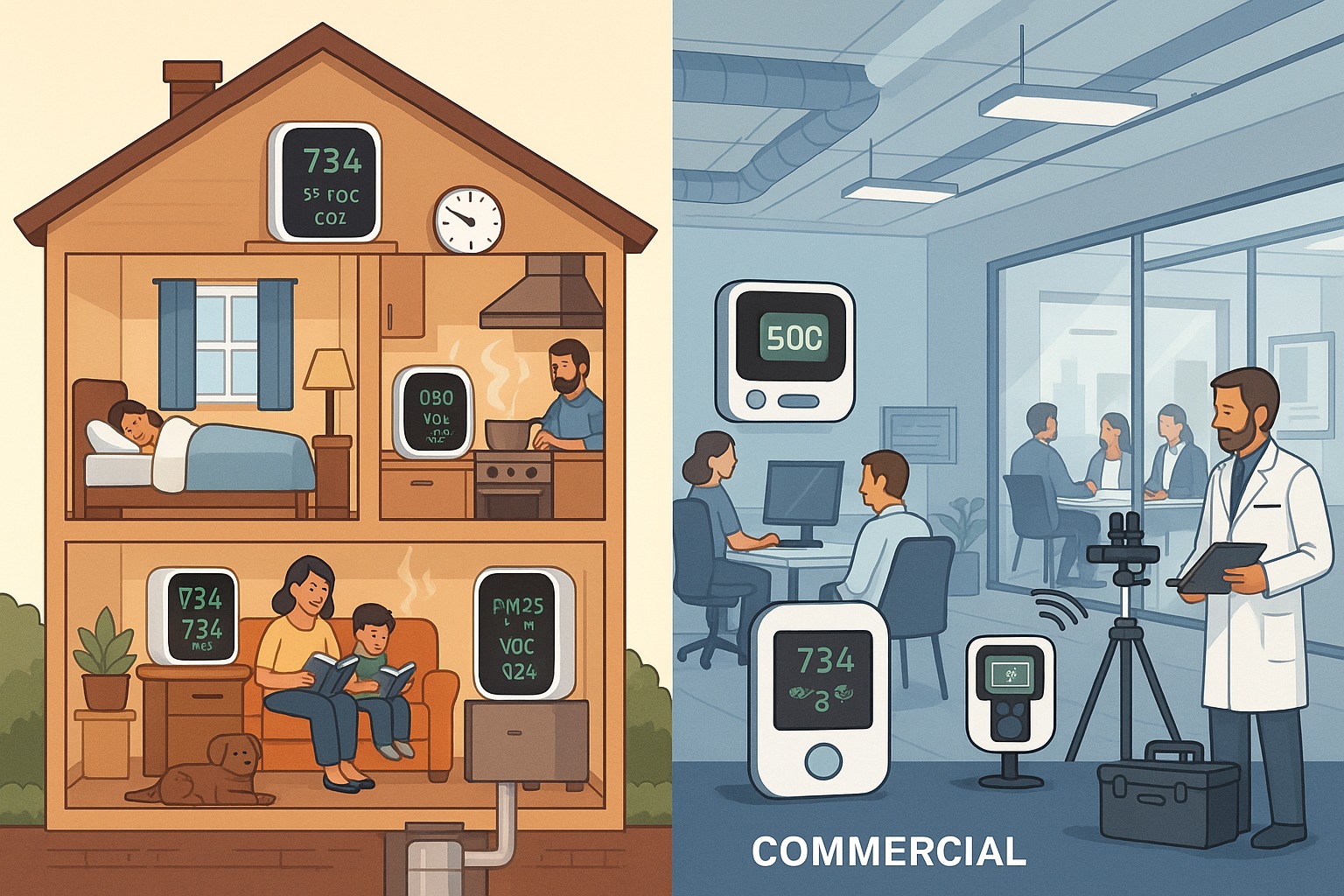
🏡 Home Air Quality Testing
Home testing focuses on health and comfort for daily living. Residential air quality affects sleep, energy levels, and long-term health for you and your family.
🏢 Commercial Air Quality Testing
Commercial spaces have different air quality challenges. Offices, schools, and businesses need testing for employee health, legal compliance, and productivity.
⚠️Safety-Critical Pollutants: When Testing Becomes Essential
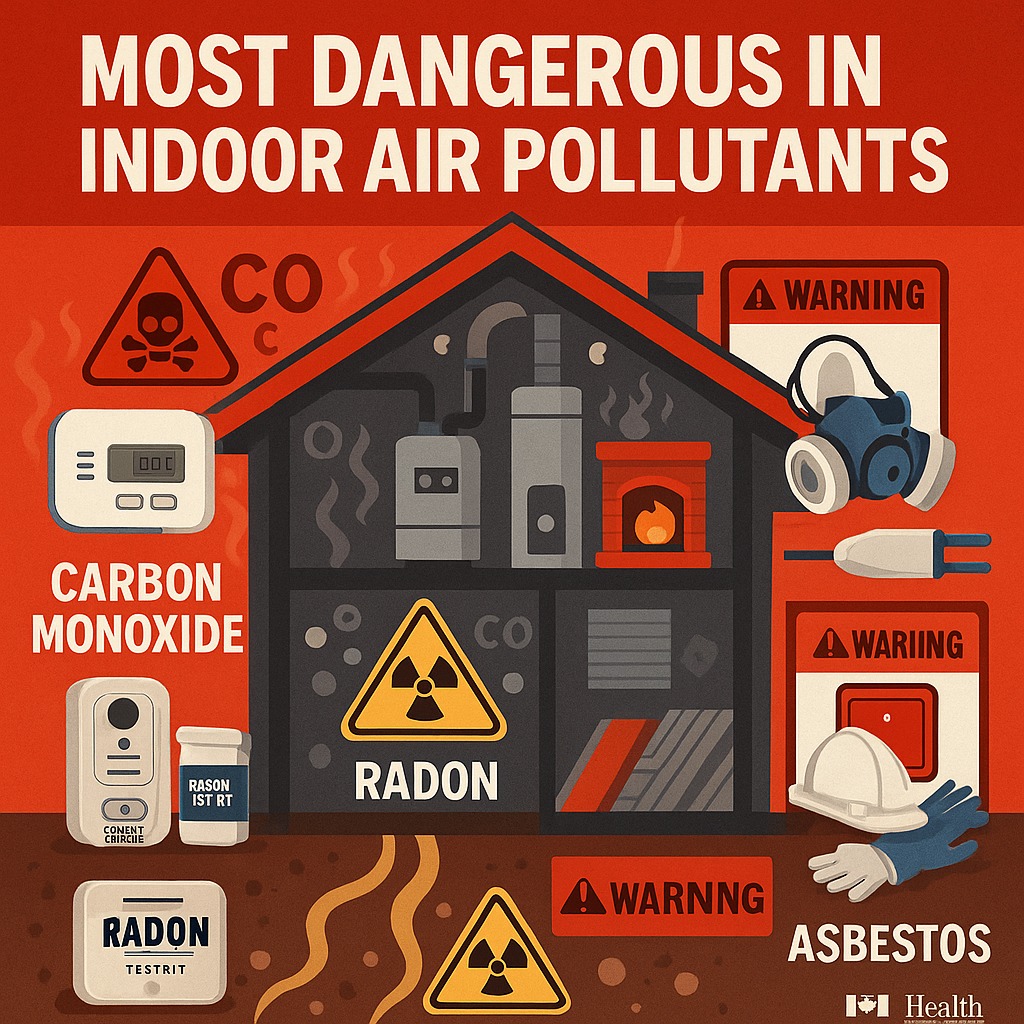
🚨 Carbon Monoxide: No Room for Mistakes
Carbon monoxide kills without warning. Every Canadian home with fuel-burning appliances needs CO detection. This isn’t optional—it’s life-saving equipment.
Professional testing ensures accurate results and proper safety advice. Asbestos testing requires professional sampling and lab analysis.
✅Certification and Accuracy: Choosing Reliable Testing Equipment
Understanding Air Quality Testing Certifications
Not all air quality kits meet the same standards. Look for certifications that ensure accuracy and reliability for health-related decisions.
✅ Look For These Certifications:
- EPA approval for radon and environmental testing
- Health Canada recognition for Canadian standards
- ISO certification for international quality
- Laboratory accreditation for professional analysis
- CSA approval for electrical safety in Canada
🚫 Avoid Equipment That:
- Makes health claims without scientific backing
- Costs significantly less than similar products
- Lacks proper certification documentation
- Has poor customer reviews about accuracy
- Doesn’t provide calibration information
Air Quality Testing: Over 15 Years of Certified Excellence
Air Quality Testing has over 15 years of experience with certified air quality testing across Ontario and Quebec. Our professional equipment and trained technicians ensure accurate results you can trust for important health decisions.
📊Understanding Your Results: Making Sense of Air Quality Data
Reading Digital Monitor Displays
Modern air quality monitors show multiple measurements that can seem confusing. Understanding these numbers helps you take the right actions for your home.
| Measurement | Healthy Range | Units | Action Needed |
|---|---|---|---|
| PM2.5 | Below 12 | μg/m³ | Good – Continue monitoring |
| CO2 | Below 1,000 | ppm | Good ventilation |
| Humidity | 30-50% | RH | Prevent mold growth |
| VOCs | Below 500 | ppb | Check pollution sources |
🛠️Taking Action: From Testing to Healthier Air
Quick Fixes for Common Air Quality Problems
🌪️ High Particle Levels
- Change HVAC filters monthly
- Use HEPA air purifiers
- Vacuum with HEPA filters
- Remove shoes at entry
🧪 High VOC Levels
- Increase ventilation
- Store chemicals safely
- Choose low-VOC products
- Add air-filtering plants
💨 Poor Ventilation
- Open windows when possible
- Use exhaust fans
- Check HVAC systems
- Add fresh air intake
Long-Term Air Quality Monitoring Strategy
Monthly: Check readings, replace filters, clean purifiers → Seasonally: Deep clean, service HVAC, check for mold → Annually: Professional maintenance, comprehensive testing, equipment updates
Learn more about improving indoor air quality with proven strategies and professional guidance.
🎯Making Your Final Decision: Choosing the Right Air Quality Testing Kit
Start With Your Biggest Concerns
Regional Considerations for Canadian Homes
Ontario and Quebec homes face specific air quality challenges including higher radon risk in granite-rich areas, mold problems from humid summers and heating seasons, and seasonal variations in outdoor air quality.
Our Service Areas Include:
Questions to Ask Before Buying:
- What pollutants does it detect?
- How accurate are the sensors?
- What’s included in the warranty?
- What customer support is available?
- Do you need professional documentation?
🏁 Ready to Breathe Easier? Your Next Steps
You now have the knowledge to choose the right air quality testing kit for your Canadian home. Good indoor air quality protects your family’s health and improves daily comfort.
1. Identify concerns → 2. Choose testing approach → 3. Set budget → 4. Take action on results → 5. Monitor changes
For professional air quality testing and expert guidance, contact Air Quality Testing. Our certified technicians provide accurate testing and practical solutions for Canadian homes across Ontario and Quebec.

